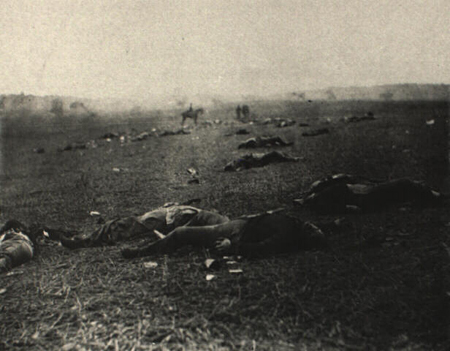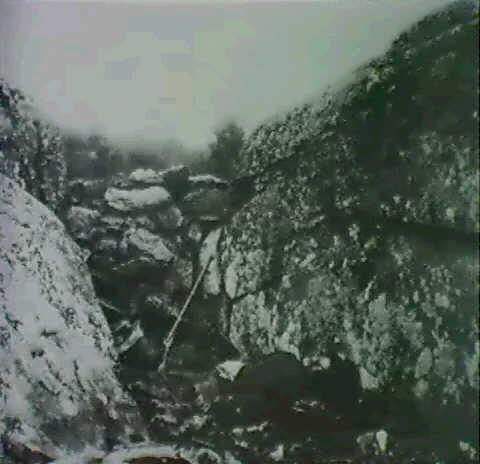Art & Exhibitions
Civil War and American Photography at the Metropolitan Museum of Art
Presca Ahn reviews the Metropolitan Museum of Art's recent Civil War exhibition.

Presca Ahn reviews the Metropolitan Museum of Art's recent Civil War exhibition.

Presca Ahn

One of the most striking aspects of the exhibition Photography and the American Civil War, on view until September 2, 2012 at the Metropolitan Museum of Art, is its simplicity. Civil War exhibitions tend to be overwrought affairs, trying to match the inherent pathos of the subject matter with dramatic curatorial gestures. In this regard, the Met’s remarkable exhibition shows restraint, trusting the photographs to generate their own emotional effect and narrative. This is the kind of show at which the Met excels: ambitious, comprehensive, and equal parts history and aesthetics.Photography and the American Civil War is as much about the photographic medium as it is about the history of the war. A young technology, photography of the 1860s could not capture moving objects or people, since the necessary exposure times were too long, and the equipment too bulky. This was a time, after all, when mechanical aids were used to hold people’s heads still when they sat for studio portraits, and photographers had to bring their whole darkrooms with them when they went out into the field. So the photographs of the Civil War favored immobile subjects: landscapes and corpses.

Timothy O’Sullivan, Interior View of Breastworks on Round Top, Gettysburg, July, 1863, Wach Gallery, Avon Lake, OH
Recent battlefields and ravaged cities evidence the devastation of war, while also becoming metaphors for America’s psychic pain. Expansive vistas of the country’s fields, rivers, and mountains had become a major subject for early to mid-19th-century American painters, and the composition of such paintings carried over into American photographers’ visions of a wounded national landscape.

Alexander Gardner, Civil War Battlefield, 1865, sold for US$1,063 at Christie’s New York on Thursday, October 7, 2010
When these photographs were taken, there was not the sharp divide between photographs’ artistic and journalistic functions that exists today. This fact informs two of the most famous images to come out of the Civil War, both depicting the war dead: Alexander Gardner’s The Home of a Rebel Sharpshooter (1863) and Timothy O’Sullivan’s A Harvest of Death, Gettysburg, Pennsylvania (1863). The latter, depicting a field strewn with the dead bodies of Confederate soldiers (the Union soldiers were buried first), may be the most iconic image of the entire Civil War period; published just after the war ended, its poetic title forms a non-partisan argument against war’s bitter cost.

Timothy O’Sullivan, A Harvest of Death, 1863, sold for US$4,400 at Sotheby’s New York on Tuesday, October 31, 1989
20th–century research has proven Gardner’s image of the Rebel Sharpshooter—depicted as dead at his post behind a rocky barricade his gun lying nearby–to be a staged photograph; both the corpse and the gun, which is not a sharpshooter’s rifle, were moved from elsewhere to form Gardner’s composition. While this fact has generated a decades-long ethical debate about journalistic ethics, the photograph endures as a tragic icon of the war.

Alexander Gardner, Home of a Rebel Sharpshooter, Gettysburg, Pennsylvania, 1863, sold for US$2,860 at Swann Galleries on Monday, April 15, 1991
Among the over 200 photographs in the exhibition are an array of tintypes and ambrotypes in little velvet-lined cases, most of them portraits of soldiers taken before they left home. These portraits were taken either with the desire to memorialize, in case the subject was killed in battle, or with the belief that having been photographed would somehow protect the subject. Either way, they are a poignant testament to the hopes and fears that soldiers and their families invested in the photographic medium.